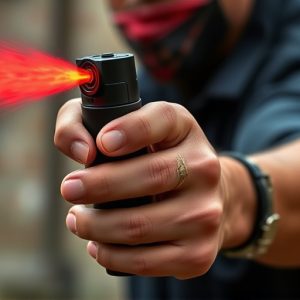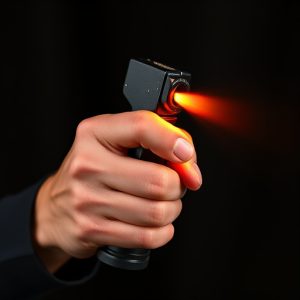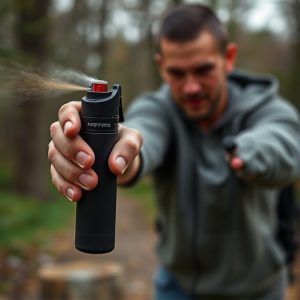Pepper Spray Holster Placement Guide: Training and Safety for Riot Control
Pepper spray, a powerful tool for self-defense and riot control, relies on capsaicin from chili pepp…….
Pepper spray, a powerful tool for self-defense and riot control, relies on capsaicin from chili peppers to temporarily disable individuals. The Pepper Spray Holster Placement Guide emphasizes strategic holster positioning near dominant limbs for swift access, improving officer readiness. Training and safety protocols are crucial, covering spray effectiveness, range, risks, maintenance, ventilation, medical reactions, and de-irritant access, ensuring responsible and effective use in high-pressure situations.
In the realm of riot control, pepper spray stands as a game-changer, offering a non-lethal solution for law enforcement. This guide delves into the essential aspects of efficient riot management with a focus on pepper spray. We explore its composition and effectiveness, emphasizing understanding its power. Additionally, we present a comprehensive Pepper Spray Holster Placement Guide, detailing optimal strategies for quick access during chaotic situations. Learn about critical training and safety measures to ensure responsible use, making it an invaluable resource for professionals navigating turbulent times.
- Understanding Pepper Spray: Its Composition and Effectiveness
- Optimizing Holster Placement for Quick Access During Riots
- Training and Safety Measures: Responsible Use of Inflammatory Spray
Understanding Pepper Spray: Its Composition and Effectiveness
Pepper spray, a common tool in riot control and self-defence, is a chemical agent designed to incapacitate individuals temporarily through irritation and pain. Its primary active ingredient is capsaicin, derived from chili peppers, which blocks nerve signals, causing localised inflammation and distress. The spray comes in various forms, each with different concentrations and delivery mechanisms.
Effective pepper spray relies on proper application and holster placement, as outlined in a Pepper Spray Holster Placement Guide. When deployed accurately, it creates a barrier of irritant, reducing visibility and mobility. This disruption can de-escalate tense situations and provide crucial time for law enforcement or individuals to retreat or gain control. Understanding the spray’s composition and functionality is essential for maximising its effectiveness in high-pressure scenarios.
Optimizing Holster Placement for Quick Access During Riots
Optimizing holster placement is a crucial component in effective riot control, ensuring quick and easy access to pepper spray during high-intensity situations. In a chaotic riot environment, every second counts. A well-positioned holster can make the difference between controlled deployment and an escalated conflict. Law enforcement professionals should follow a Pepper Spray Holster Placement Guide to enhance their tactical readiness.
The guide recommends positioning holsters close to dominant limbs, allowing for swift and natural reach. For instance, a side holster mounted at the waist or hip level facilitates easy grip with minimal movement. This placement ensures officers can deploy the spray instinctively when confronted with rioters, providing a rapid de-escalation tool. Additionally, rotating holsters to alternate sides during shifts prevents fatigue and guarantees equal proficiency in either hand, catering to different physical preferences and unexpected circumstances.
Training and Safety Measures: Responsible Use of Inflammatory Spray
Training and safety measures are paramount when it comes to the responsible use of inflammatory spray, or pepper spray, for riot control. Law enforcement agencies and security personnel must undergo comprehensive training to understand the spray’s effectiveness, range, and potential risks. This includes learning about different Pepper Spray Holster Placement Guide techniques to ensure maximum efficiency during volatile situations.
Proper safety protocols include regular maintenance of the equipment, understanding the spray’s expiration date, and ensuring proper ventilation during usage. Officers should also be aware of potential medical reactions and have immediate access to eye wash stations or other de-irritants to mitigate any adverse effects. Responsible use involves targeting specific areas to minimize harm while effectively dispersing a crowd.
Pepper spray, a powerful tool in riot control, requires strategic holster placement for maximum effectiveness. As demonstrated in this Pepper Spray Holster Placement Guide, proper training and safe handling practices are paramount to ensure the responsible use of inflammatory spray during volatile situations. By optimizing holster positioning and understanding its composition, law enforcement officers can efficiently navigate riots, maintain control, and protect both themselves and the public.


